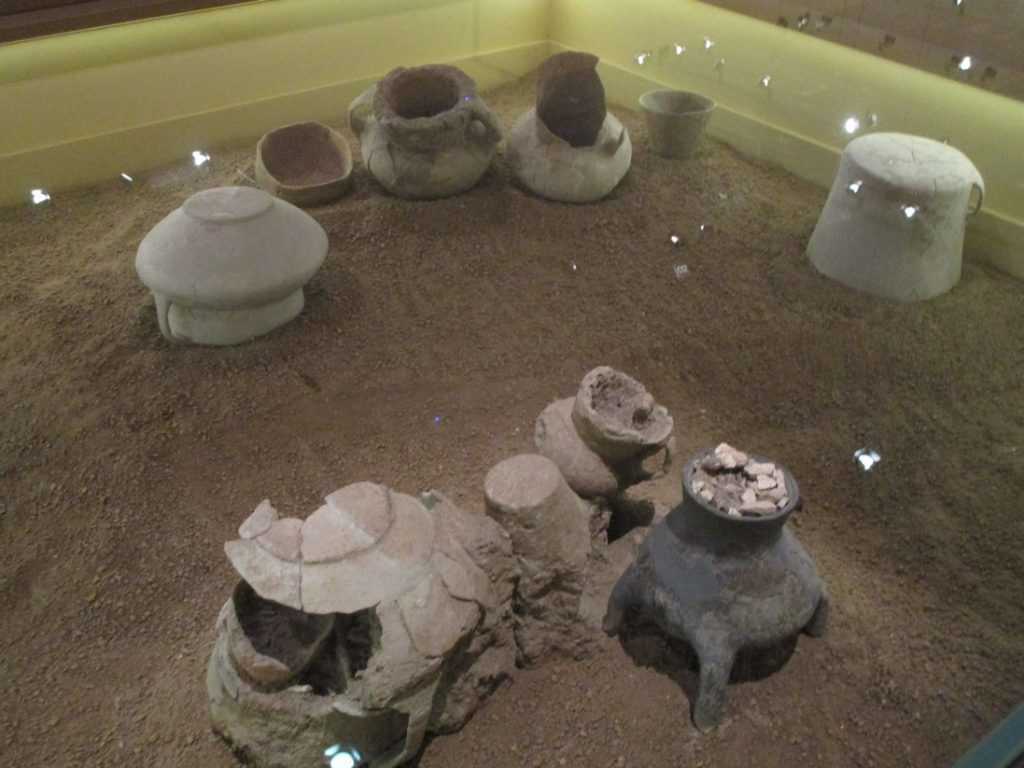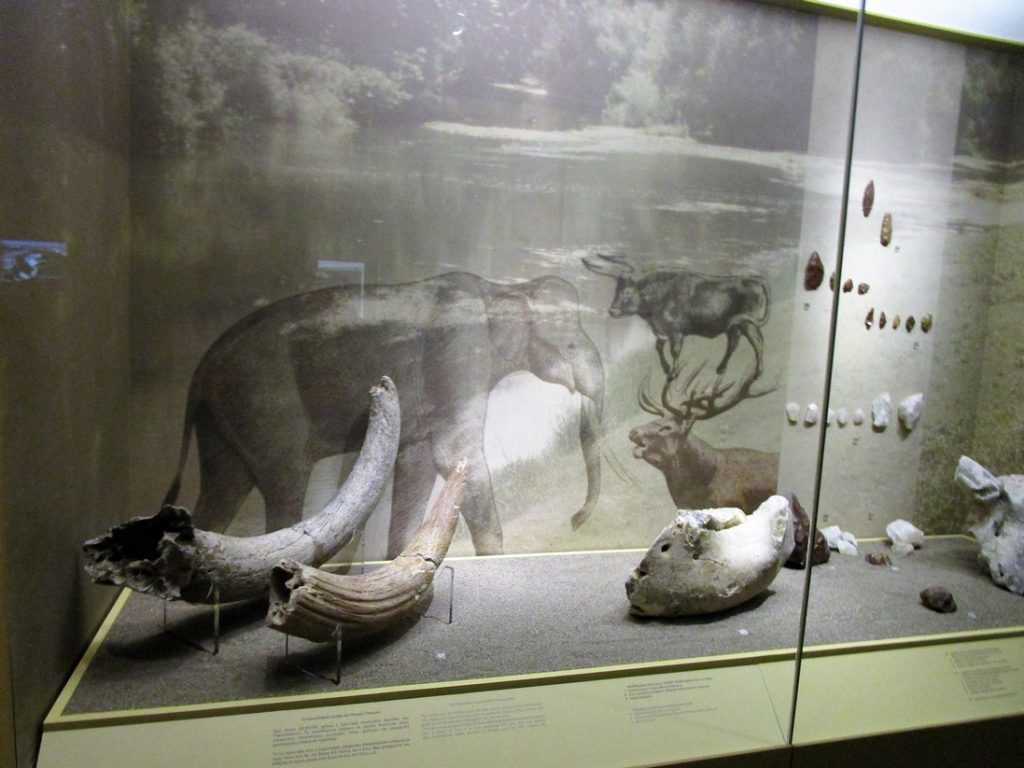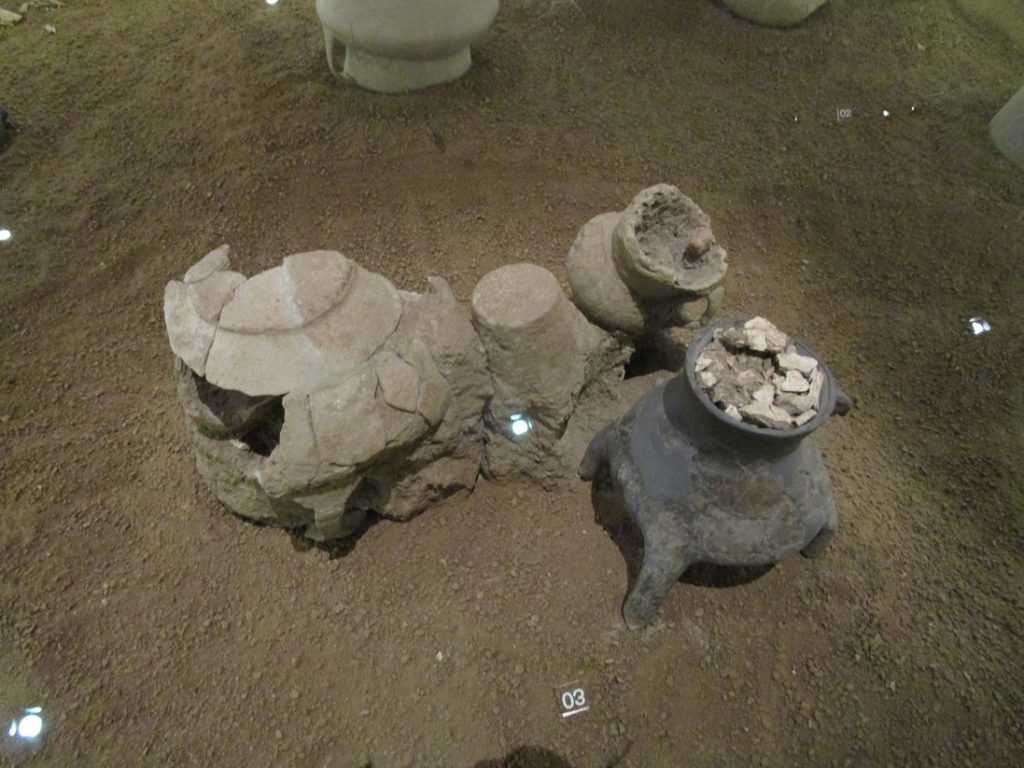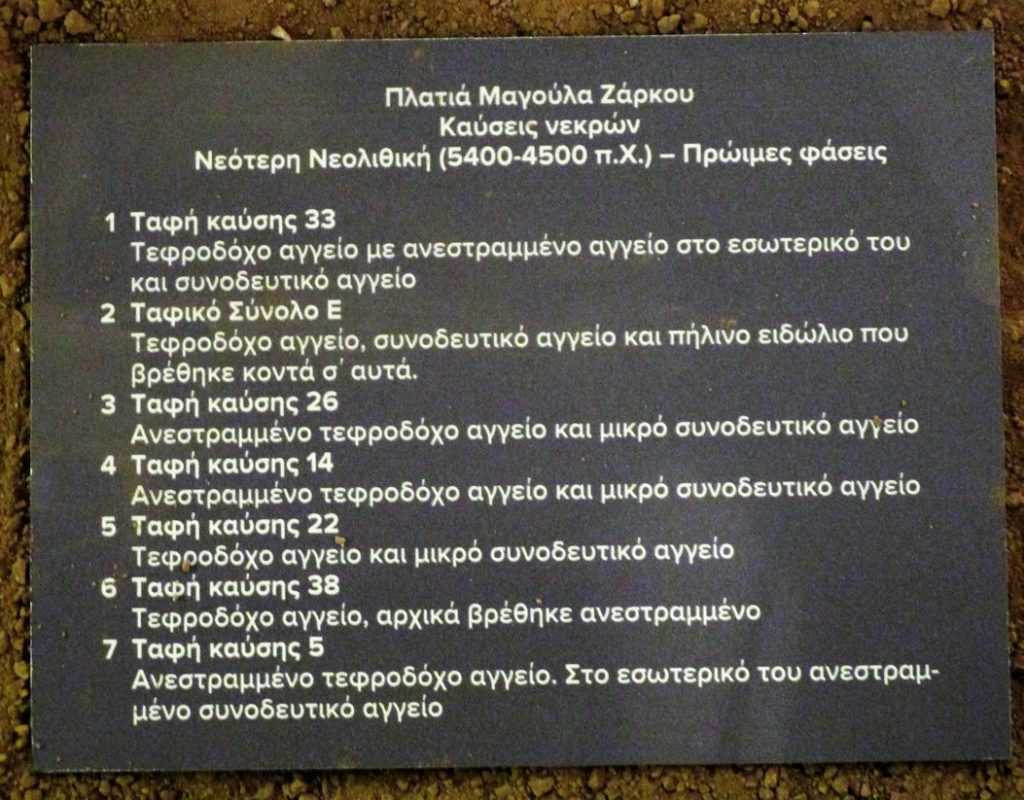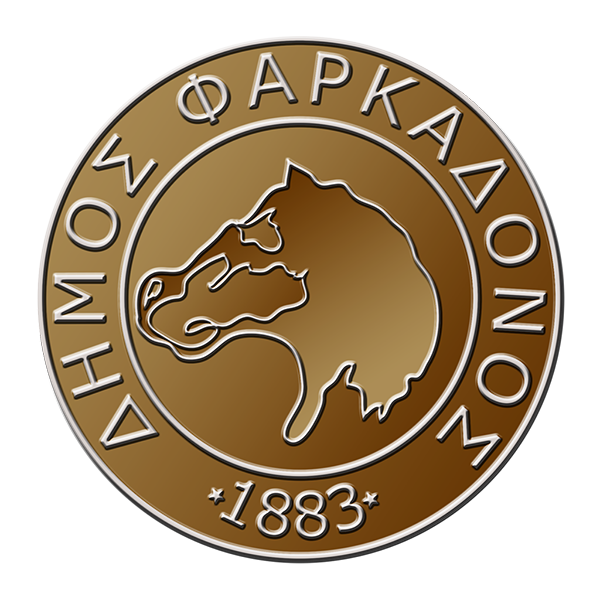Magoula is the name of the low rise in the plain with an area of a few acres, which was created by the accumulation of settlement embankments.
In Thessaly, the first permanent settlements were built on hills or near alluvial river deposits and were inhabited successively over time. Alluvium or alluvium deposits (Latin. alluvium) or alluvium are the deposits of clay, sand, latipus (gravel) and other transported materials produced due to the flow of water in a fluvial environment. Rivers leave alluvial deposits in the riverine plains and deltas. These deposits are gradually created by the accumulation of clastic products of disintegration and fragmentation of rocks. Debris is carried away by the flow of water and, when it slows down, the transported materials can no longer be transported and are deposited. In general, this kind of deposits are rich in organic materials and possibly in finds of archaeological interest.
The continuous habitation in the same area and the superimposed layers of habitation lead to the creation of technical gelofs (cheeks in Thessaly, tumbles in Macedonia).
These hills are scattered today in the Thessalian plain and stand out in the plain by their height. They belong to all phases of the Neolithic and are signs of a once densely populated and lively social space.
The settlement
The prehistoric settlement was inhabited from the end of the earliest Neolithic (6500 – 5800 BC) to the beginning of the New Neolithic (5300 – 4500 BC). After millennia of abandonment, it was re-inhabited during the Early Bronze Age (3000 BC).
Geological investigations showed that the settlement was organized near the banks of the Pinios, taking advantage of the fertile soil for cultivation. Today it appears in the form of a hill about 5 meters high and 200 meters in diameter.
Archeological findings
At a distance of 300 meters north of the prehistoric settlement, a regular cemetery with exclusively cremation burials was found. It dates back to the beginning of the New Neolithic (5300 – 4500 BC) and is considered the oldest cremation cemetery in Hellas.
The burnt bones of even small children under the age of 6 have been found. Burnt bones were placed inside urns which were types of everyday vessels. It was some kind of offering to the dead. These vessels were buried upright or upside down, sometimes covered with another vessel, in shallow pits. A smaller vase was usually placed near them as a decoration.
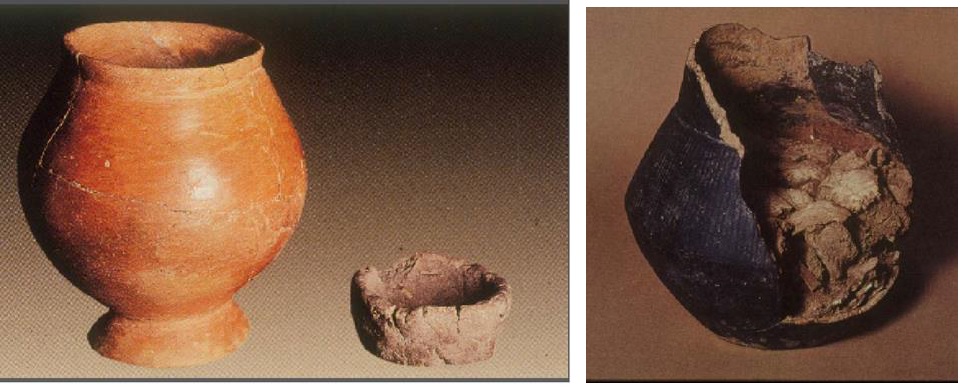
The clay house model
Particularly impressive is the clay model of a house, which is preserved almost entirely. It was found under the floor of a house in the settlement of Platia Magoula and had been placed as a foundation offering, a kind of sacrifice to ensure the well-being of the house. It is rectangular, without a roof, with low and irregular walls, a thick and flat base. Its dimensions are 0.17 meters long, 0.15 meters wide and 0.052 meters high.
ΠΕΡΙΓΡΑΦΗ:
In the middle of one of its long sides is the entrance, and next to it, and almost opposite it, in contact with the back side of the house, there is an oven with a semi-cylindrical dome, in the right corner a rectangular platform (bed). The dummy contains:
✓ 8 (eight) movable clay anthropomorphic figurines,
✓ as well as two unidentified clay objects
One of them, between the oven and the platform, probably represents a grater, while the other in front of the oven, the loaf of bread. The female figure lying on the platform and a male figure next to her probably represent the older parents, the couple to the right of the entrance corresponds to the younger parents, while a small figurine next to the woman’s shoulder probably represents a baby, 3 more figurines, 2 female and 1 male must correspond to its younger members.
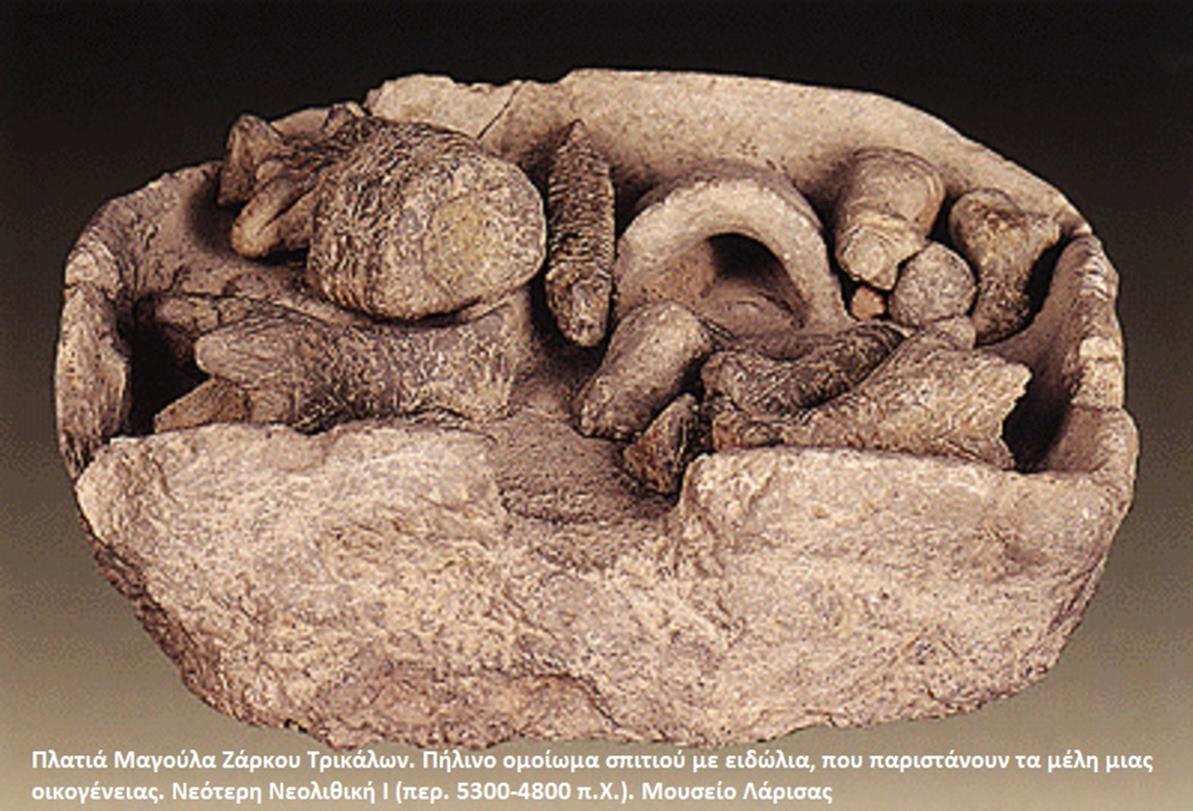

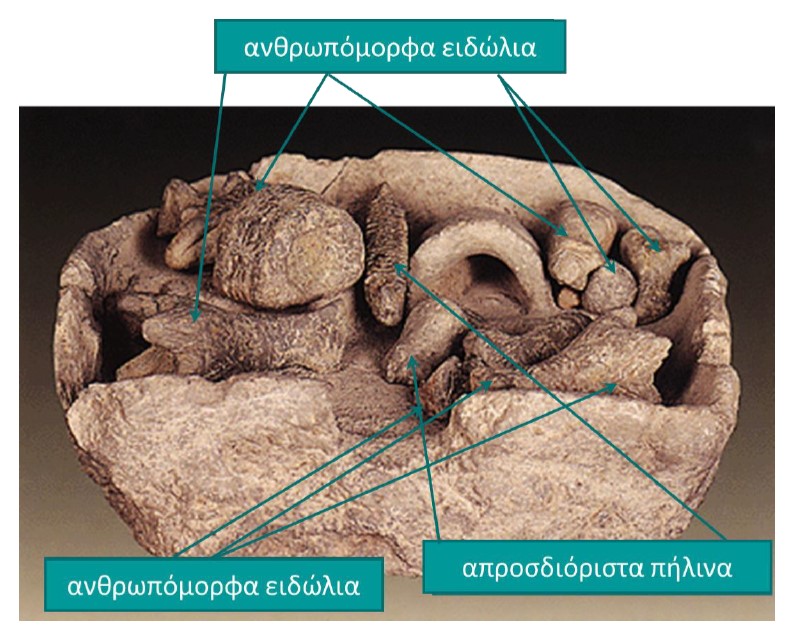

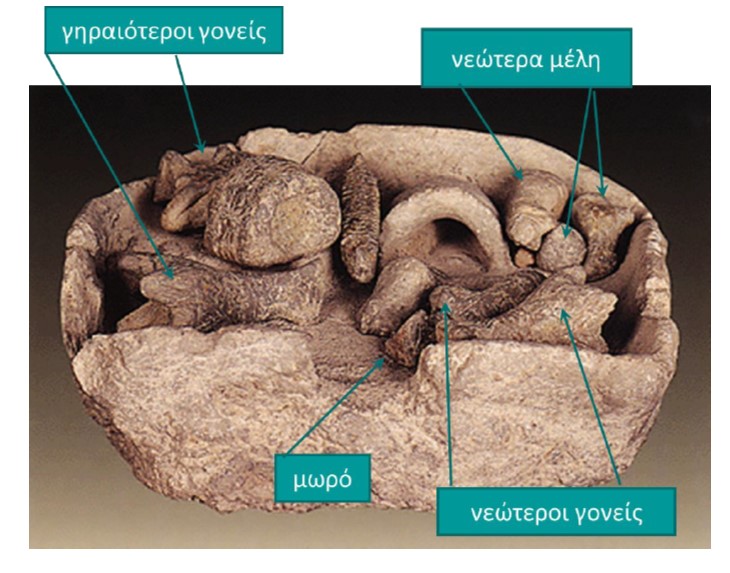
The excavations that started in 1974 and stopped in 1990 under the supervision of Mr. Gallis led to the identification first of the cemetery, and later of the settlement, which is located 300 meters south of it. The cemetery of the settlement is particularly important, as it exclusively includes cremation burials of children and minors, the number of which exceeds 50. The pottery found in the cemetery and in the settlement helped to date the Newer Neolithic, as gray (Tsangli phase) and black glazed pottery (Larissa phase) were found in the same layer and thus the Larissa phase is placed at the beginning of the Newer Neolithic and not at the end of it as they believed earlier, before the excavation in Platia Magoula.
If someone today wants to admire the clay effigy, as well as other archaeological findings from Platia Magoula Zarkou, they can visit the Timeless Museum of Larissa, a state-of-the-art museum that has exhibits from various regions of Thessaly, from the prehistoric era to the Byzantine era. .
